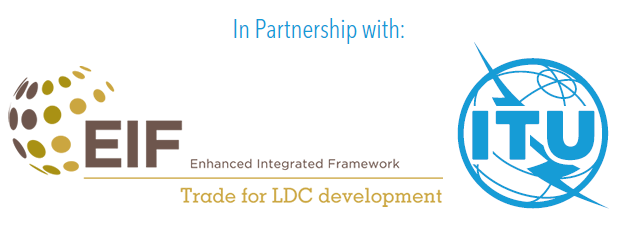Acknowledgements
This handbook has been prepared by International Telecommunication Union (ITU) expert Mr Mario Filadoro, within the scope of ITU Telecommunication Development Bureau (BDT) digital inclusion, policy and regulation thematic priorities, and with the kind support of the ITU Information Communications and Technology Development Fund and the Enhanced Integrated Framework.
Disclaimers
The designations employed and the presentation of the material in this publication do not imply the expression of any opinion whatsoever on the part of the International Telecommunication Union (ITU) or of the secretariat of ITU concerning the legal status of any country, territory, city, or area or
of its authorities, or concerning the delimitation of its frontiers or boundaries.
The mention of specific companies or of certain manufacturers’ products does not imply that they are endorsed or recommended by ITU in preference to others of a similar nature that are not mentioned. Errors and omissions excepted; the names of proprietary products are distinguished by initial capital letters.
All reasonable precautions have been taken by ITU to verify the information contained in this publication. However, the published material is being distributed without warranty of any kind, either expressed or implied. The responsibility for the interpretation and use of the material lies with the reader. The opinions, findings and conclusions expressed in this publication do not necessarily reflect the views of ITU or its membership.
Foreword

I am pleased to present the Handbook on mainstreaming gender in digital policies.
The Handbook is a first-of-its-kind guide that gives insights into how we can best support policy-making processes that advocate gender equality. It illustrates the concrete actions that policy-makers can take and offers an actionable checklist that supports the process of gender-equal policy-making, from gathering data and conducting research to measuring impact.
If the world is to achieve gender-equal digital inclusion in the future digital economy, Internet policies and strategies must enable an explicit focus on gender equality. This also means strengthening institutions and innovative policies that promote digital gender equality. This Handbook serves as an important tool to help us develop policies and solutions and puts gender equality at the centre, rather than on the side-lines, of policy-making.
Bridging the gender digital divide – in all its complexity and variability throughout the world – is essential work for all of us involved in building the global technological infrastructure. The digital future belongs to all of us, regardless of gender.
I encourage all stakeholders to use this Handbook to focus on gender digital equality and to work together to increase the impact of our efforts to achieve gender digital equality.

Executive Summary
Many women around the world find it more difficult than men to participate in the financial, educational, social and health resources of the digital technology-driven world. While digital gender divide has been narrowing across all regions in the world, women remain digitally marginalized in many of the world’s low-income countries. …
Introduction
Globally, on its current trajectory, it will take 135.6 years to close the gender gap: the average distance completed to parity is at 68 per cent, according to World Economic
Selected challenges faced by women in the digital space
Women face multiple challenges that prevent them to fully benefit from the opportunities offered by the digital space. This section does not intend to list them all but, rather, to focus on access to digital technology, access to digital skills …
Informing women overcome challenges in different regions
This section offers a snapshot of practices around the world that addresses challenges identified in section 2. Most practices have been …
Setup for gender mainstreaming: institutions, coordination and national strategies
Gender mainstreaming practices presented in the previous section involve several stakeholders ranging from government institutions to private sector entitles and NGOs. When it comes to government institutions, practices show that institutions that put in place gender mainstreaming practices are those that put in place digital policies (i.e., ministries in charge of ICT, ICT regulators, etc.). This section analyses the role of ministries in charge of ICT and other ministries influencing the digital economy, identifies institutionalized coordination mechanisms for connecting digital policies to gender, and highlights the link between gender mainstreaming practices to national strategic documents such as overarching national ICT policies.
Lessons learned, conclusion, check-list and way forward
Some gender mainstreaming practices are more popular than others. Practices helping women and girls to access digital skills are the most reported in the pool of practices

